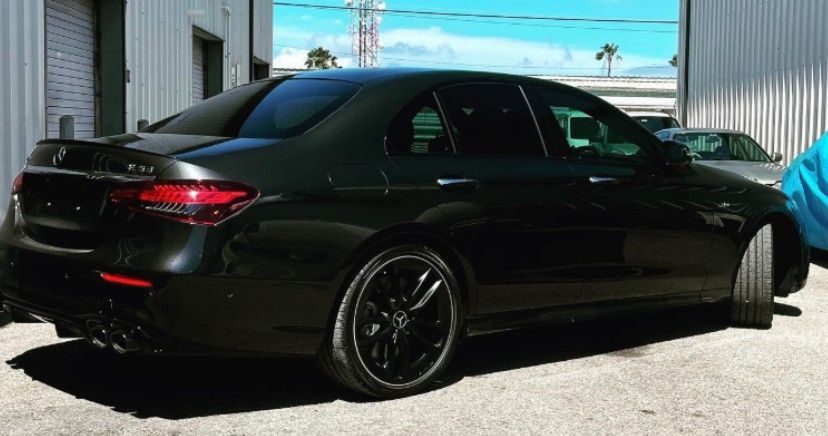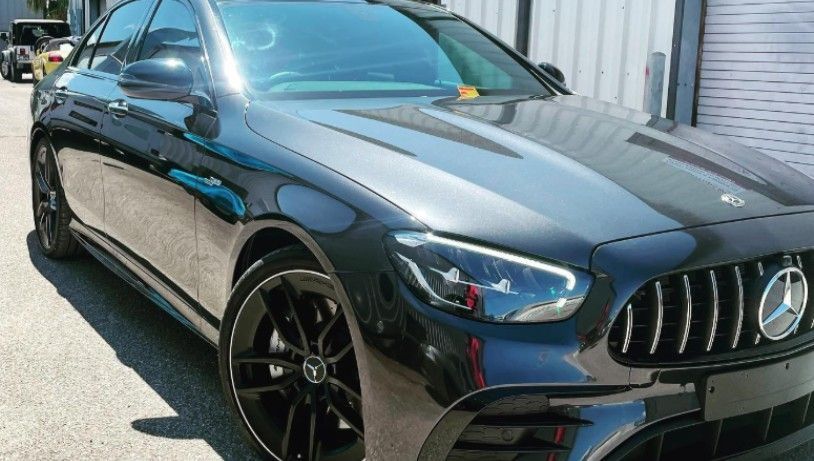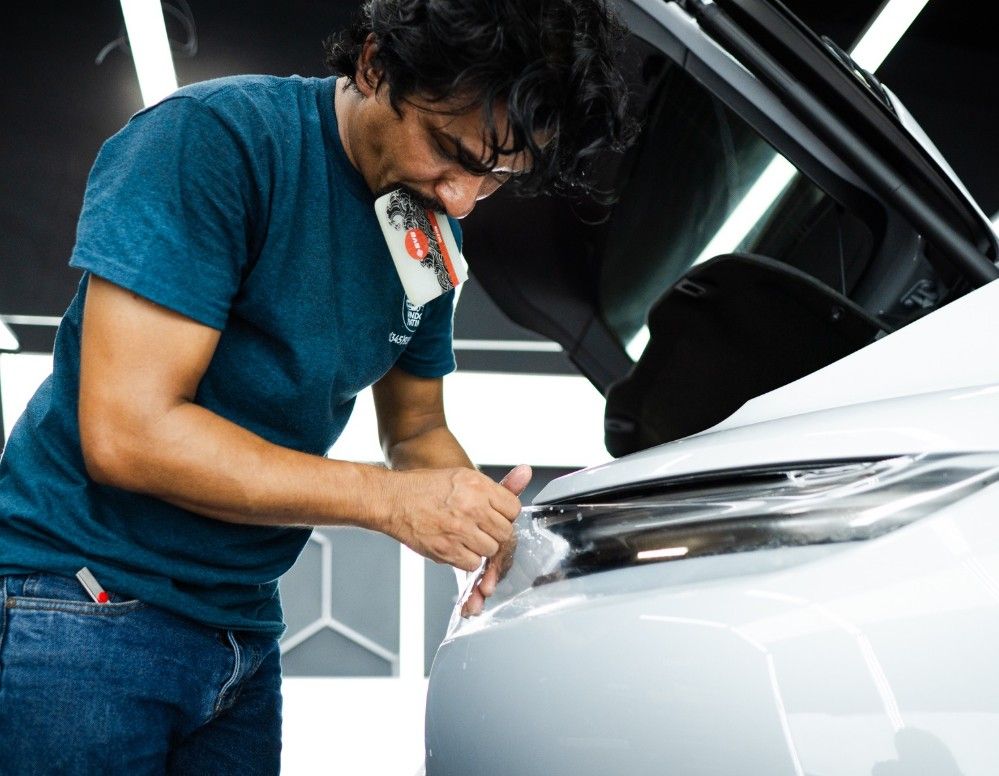Ceramic Coating in the Cayman Islands: Protecting Your Vehicle from the Elements
GET A QUOTEThe Cayman Islands boasts a tropical climate, characterized by high humidity and frequent rainfall. While this climate provides a lush, vibrant environment, it also presents unique challenges for vehicle owners who want to keep their cars looking pristine. Ceramic coating has become a popular solution for protecting vehicle exteriors from the harsh elements, but proper application is key to ensuring its effectiveness. This blog will explore how ceramic coating helps protect your car from the humid conditions in the Cayman Islands and why professional application is critical for achieving lasting results.
Understanding the Unique Climate Challenges in the Cayman Islands
The Cayman Islands experience a tropical marine climate, with high humidity levels and frequent rainfall throughout the year. These environmental factors can quickly take a toll on your vehicle’s exterior. Humidity causes condensation, which, when combined with airborne salt, dirt, and pollutants, can lead to corrosion, paint damage, and the formation of water spots. Additionally, the intense UV rays from the sun can cause fading and oxidation to the vehicle’s paint over time.
In these conditions, a ceramic coating acts as a protective layer, safeguarding your vehicle from the elements and preserving its aesthetic appeal. By repelling water, dirt, and contaminants, ceramic coatings create a shield that reduces maintenance and keeps your car looking fresh despite the harsh tropical environment.
The Importance of Proper Ceramic Coating Application
While ceramic coating offers impressive protection, its effectiveness largely depends on how well it’s applied. A professional-grade application ensures the coating bonds properly with the vehicle’s paint, forming a durable and long-lasting protective layer. If applied improperly, the coating may not adhere correctly, which can lead to uneven coverage, diminished protection, and reduced durability.
It’s important to remember that proper surface preparation, curing, and environmental conditions are essential for a successful application. A professional service provider like Cayman Window Tinting understands the nuances of applying ceramic coatings in the humid climate of the Cayman Islands, ensuring the coating performs at its best.

How Ceramic Coating Helps Protect Against the Elements, Including Humidity
One of the primary benefits of ceramic coating is its ability to create a hydrophobic surface that repels water, dirt, and grime. In the Cayman Islands’ humid climate, this property becomes even more essential, as it helps prevent water and moisture from adhering to the vehicle’s paint. As a result, water beads off the surface instead of pooling and potentially causing water spots or corrosion.
The coating also provides a barrier against UV rays, preventing sun damage and fading, which is particularly important in a region with high sun exposure. Furthermore, it shields your car’s paint from contaminants such as bird droppings, tree sap, and road salt, all of which can be exacerbated by the humid, tropical conditions of the Cayman Islands.
The Difference Between DIY and Professional Ceramic Coating Applications
Many car owners are tempted to apply ceramic coating themselves, opting for DIY kits available in the market. However, there are significant differences between DIY and professional applications, especially in a humid environment like the Cayman Islands.
- Surface Preparation: Professional applications begin with thorough
paint correction and surface cleaning, removing contaminants and imperfections that can prevent the coating from bonding properly. DIY applications often skip this critical step, leading to uneven coverage and reduced protection.
- Environmental Control: Humidity plays a key role in the curing and bonding process of ceramic coatings. In the Cayman Islands,
high humidity levels can interfere with the proper curing of the coating. Professionals understand how to manage these conditions to ensure that the coating adheres and cures effectively.
- Durability and Effectiveness: Professional-grade ceramic coatings are formulated for long-lasting durability. DIY kits may not offer the same level of protection or be as resistant to the elements, resulting in shorter longevity and potential issues with uneven bonding or wear.
How High Humidity Affects Various Materials, Including Car Paint
In tropical climates, high humidity levels create a constant presence of moisture in the air. This moisture can have detrimental effects on various materials, including car paint. When humidity combines with airborne salt, dirt, and pollutants, it can lead to:
- Corrosion: Moisture and contaminants can cause the paint to break down, leading to
rust and
corrosion, particularly in areas where water sits on the surface for extended periods.
- Water Spots: Humidity combined with rain creates the perfect conditions for
water spots, as moisture evaporates and leaves mineral deposits on the vehicle's surface.
- Oxidation: Humid environments accelerate the process of
oxidation, leading to dull, faded paint over time.
Ceramic coating acts as a protective barrier, preventing moisture from penetrating the paint and helping to keep the vehicle’s exterior looking newer for longer.
The Challenges of Applying Coatings in Tropical Climates
Applying ceramic coatings in tropical climates like the Cayman Islands presents unique challenges. High humidity, along with fluctuating temperatures, can impact the application and curing process. Some common challenges include:
- Uneven Curing: High humidity levels can interfere with the
curing process, causing the coating to cure unevenly. This results in an inconsistent layer of protection, leaving certain areas more vulnerable to environmental damage.
- Improper Bonding: The bonding of the ceramic coating to the paint may be compromised if applied in humid conditions. This could result in a weaker protective layer that doesn't last as long or provide full protection against water, dirt, and contaminants.
- Extended Drying Time: The high moisture content in the air can extend the time needed for the coating to properly dry and cure, which could delay the process and result in less optimal results.
The Role of Humidity in the Curing and Bonding Process of Ceramic Coatings
The curing and bonding process of ceramic coatings is highly sensitive to environmental conditions. Humidity plays a crucial role in determining whether the coating adheres effectively to the car’s paint. Excess moisture in the air can prevent the coating from bonding fully, leading to:
- Poor Adhesion: If the coating doesn’t bond properly, it may peel or wear off sooner than expected, leaving the vehicle unprotected.
- Uneven Coverage: High humidity can cause the coating to cure unevenly, leading to areas of the vehicle receiving more protection than others.
In the Cayman Islands, professionals at Cayman Window Tinting are experienced in applying ceramic coatings under the region’s specific climate conditions, ensuring proper bonding and a long-lasting, durable finish.
Potential Issues: Uneven Curing, Improper Bonding, and Reduced Durability
When ceramic coatings are applied in high-humidity conditions without proper knowledge or control, uneven curing, improper bonding, and reduced durability can occur. These issues can compromise the performance of the coating, leaving the vehicle vulnerable to the elements. Some of the potential consequences include:
- Inconsistent Water Repellency: Areas that don’t bond properly may lose the hydrophobic properties of the coating, allowing water and contaminants to stick to the surface, defeating the purpose of the ceramic coating.
- Fading and Paint Damage: Improper application may result in areas where the paint remains exposed to UV rays and contaminants, leading to fading and potential long-term damage.

The Risk of DIY Application in Humid Environments Like the Cayman Islands
Applying ceramic coating yourself in the Cayman Islands’ humid environment poses several risks, especially for those who are not familiar with the specific needs of the application process. DIY kits often lack the professional-grade ingredients and curing control needed for optimal results in tropical climates.
The potential risks of DIY application include:
- Poor Surface Preparation: Without proper cleaning and paint correction, contaminants may remain on the surface, affecting the bonding and effectiveness of the coating.
- Improper Curing: Humidity can cause the coating to cure too quickly or unevenly, leading to a compromised layer that doesn’t provide long-lasting protection.
- Wasted Time and Money: A failed DIY coating application may result in wasted time, effort, and money, and in many cases, a professional reapplication will be necessary.
Step-by-Step Breakdown of Our Ceramic Coating Application Process
At Cayman Window Tinting, we follow a meticulous, multi-step process to ensure the best results when applying ceramic coatings:
- Surface Preparation: We thoroughly clean and correct the paintwork, removing any contaminants, swirl marks, and imperfections to create a perfect surface for bonding.
- Application of Ceramic Coating: The coating is applied carefully in sections, ensuring even coverage and precise application.
- Curing Process: The coating is allowed to cure in optimal environmental conditions, ensuring proper bonding and durability. We monitor the curing process to ensure maximum effectiveness.
- Final Inspection: After the coating has fully cured, we conduct a thorough inspection to ensure the coating has bonded properly and that the vehicle is protected.
Why Choose Cayman Window Tinting for Your Ceramic Coating Application
Choosing Cayman Window Tinting ensures that your vehicle receives the best care in Cayman Islands. Our professional team has experience applying ceramic coatings in humid tropical climates, ensuring optimal performance and durability. With our attention to detail and expertise, we provide a high-quality, long-lasting protective layer for your vehicle.
Conclusion
In the Cayman Islands, the tropical climate can take a significant toll on your car’s exterior. Ceramic coating offers an effective solution to protect your vehicle from humidity, rain, road salt, and UV damage. While DIY kits may seem tempting, professional application ensures that your car receives the proper preparation and protection it deserves. By choosing Cayman Window Tinting, you can rest assured that your vehicle will stay in excellent condition, even in the harshest weather. Contact us today to schedule your professional ceramic coating application and safeguard your car for years to come.




